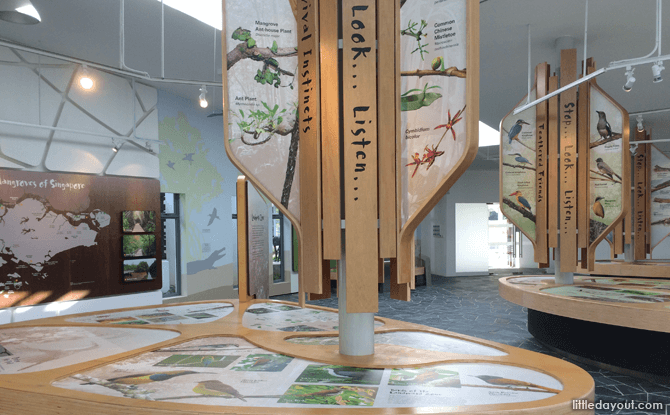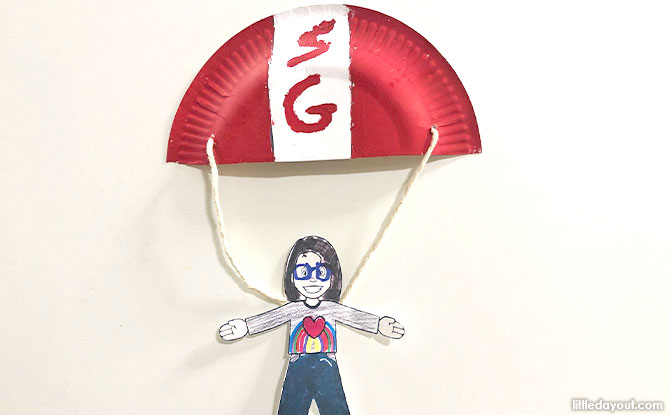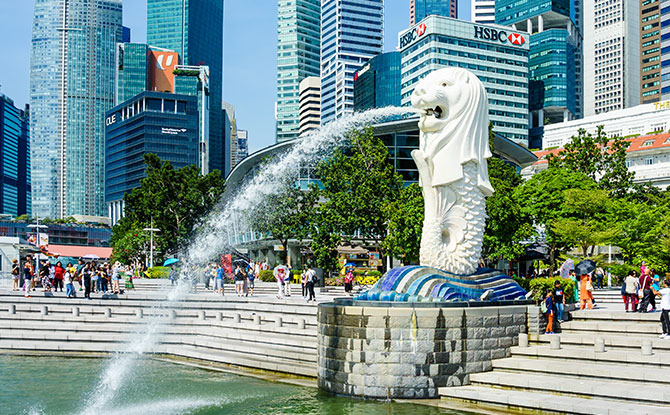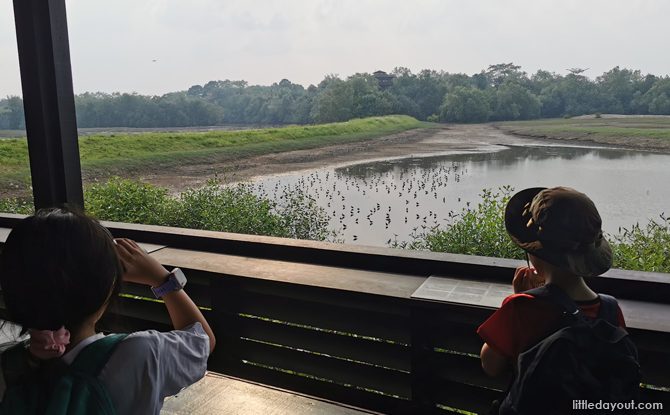
Located in the far northwest of Singapore, Sungei Buloh Wetland Reserve is haven for wildlife. With tidal ponds and mangrove forests, it supports an ecosystem of birds, reptiles and mammals. At the same time, it provides visitors a chance to encounter and admire these animals in their natural habitat.
Some of the animals that visitors come to see at Sungei Buloh’s Tidal Ponds include herons, kingfishers, monitor lizards, water snakes and crocodiles (!!!).
Sungei Buloh means “River of Bamboos” in Malay. The area used to be a fish and prawn farm explaining the rich biodiversity unique to this area.
The most popular time of the year to visit is from September to March. This is when migratory birds such as the Great Egret, Marsh Sandpiper and Himalayan Swiftlet fly into the wetlands at Sungei Buloh. Sungei Buloh Wetland Reserve has also been recognised as a site of significant importance for migratory birds and in the East Asian Australasian Shorebird Site Network.
BE PSLE-READY: Join Expert Educators for Revision Boosters to Empower P6 Students
BURP: Join the Sound Collector on a Whimsical Chase at Esplanade – Theatres on the Bay
WEEKEND IDEAS: Get Inspirational Ideas of Things to Do
For human visitors, the entry to the wetlands at Sungei Buloh is much less dramatic.
There are two ways to enter Sungei Buloh Wetland Reserve: via the Wetland Centre or Visitor’s Centre. The entrances are also served by different carparks: Neo Tiew Carpark and Kranji Way Carpark.
For families with young children or elderly, the paths such as the Coastal Trail nearer the Visitor’s Centre would be more accessible to strollers and wheelchairs. We would recommend parking here if you have the young or elderly in tow.
Entrance to Sungei Buloh Wetland Reserve via Wetland Centre
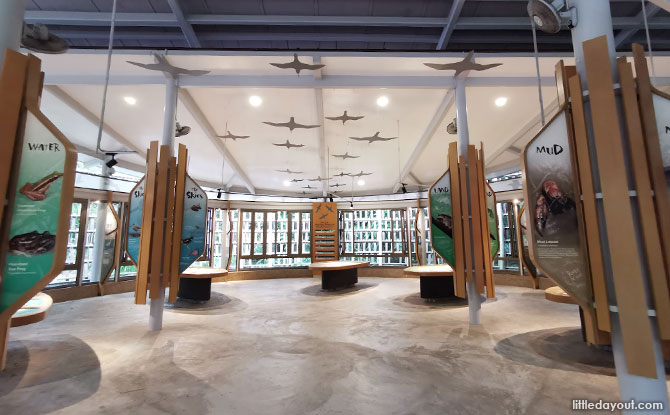
The first building visitors heading to the Tidal Ponds will come to is the Wetland Centre. This should not be confused with the Visitor Centre that is located at the Sungei Buloh Wetland Reserve Extension.
As you walk into the Wetland Centre from the carpark, you will pass some trees where a family of Buffy Fish Owls reside in. See if you can spot them! This is an opportunity to point the children to fun facts about migratory birds using the signages.
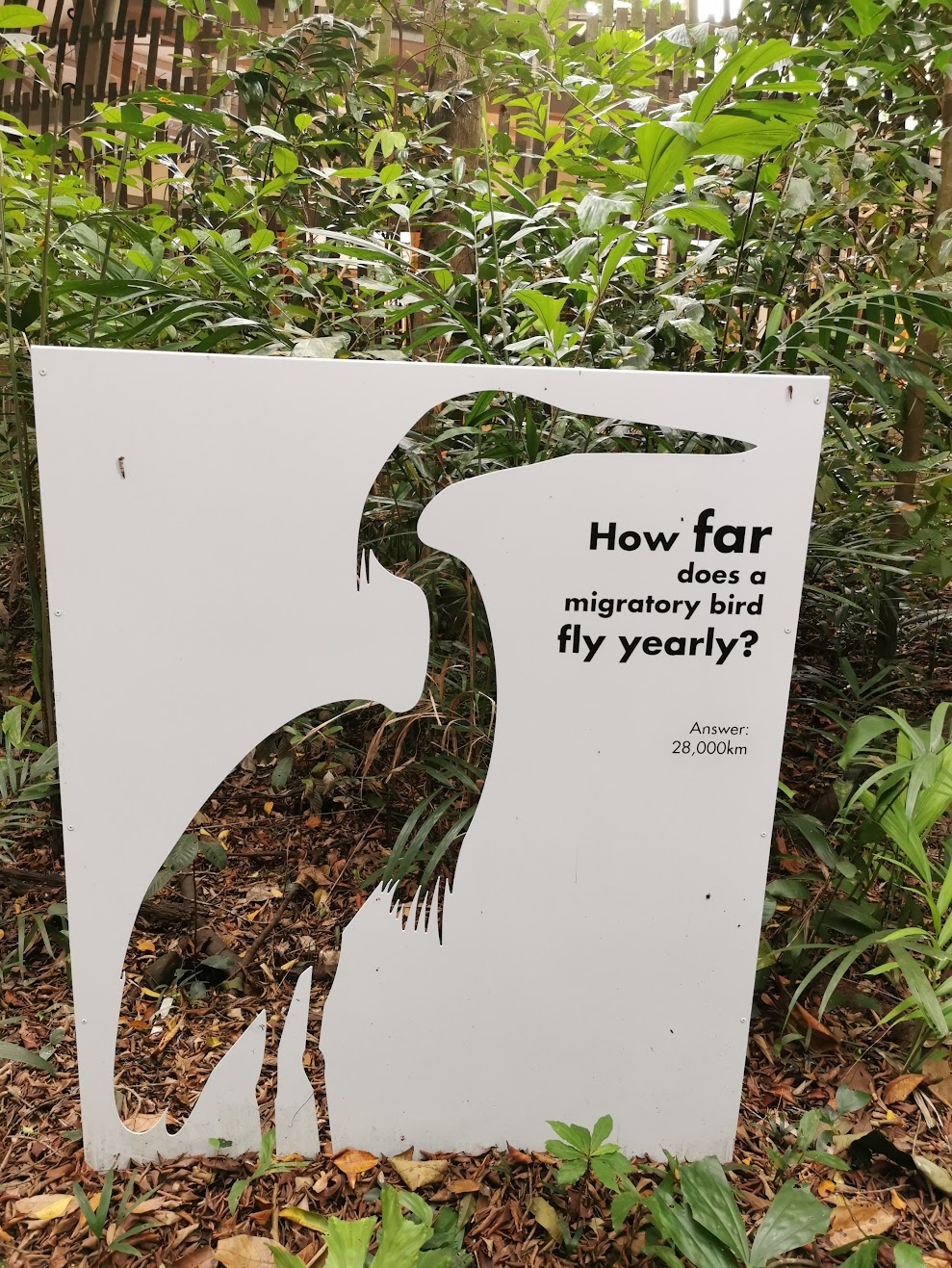
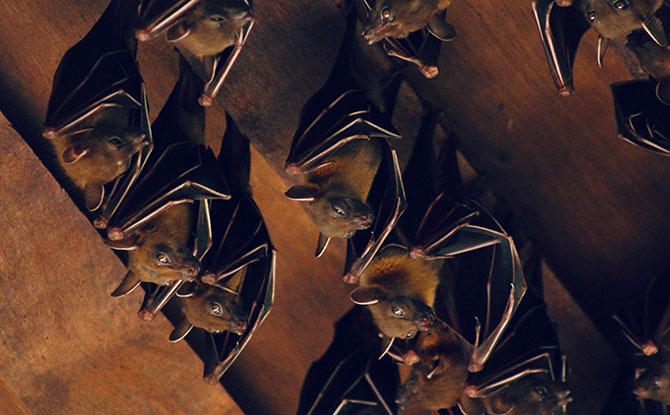
At the Wetland Centre’s Nature Gallery, there are educational panels that provide a wealth of information about the flora and fauna of the wetland reserve. Also look above you and check out the fruit bats that have made their home at the roof of the Wetland Centre. Kids will definitely be drawn to the adorable sleeping creatures hanging upside down.
Sungei Buloh and its tidal ponds became a nature reserve in 2002. The Sungei Buloh Wetland Extension, with coastal walks and a mudflat experience, was later added to the east of the Reserve in December 2014.
In August 2020, it was announced that the eastern extension will be renamed Kranji Coastal Nature Park. It would also form part of of the Sungei Buloh Nature Park Network which will include a new Lim Chu Kang Nature Park to the west of the Wetland Reserve and connections with other nature spaces in the area.
Resident & Visiting Wildlife at Sungei Buloh Wetland Reserve
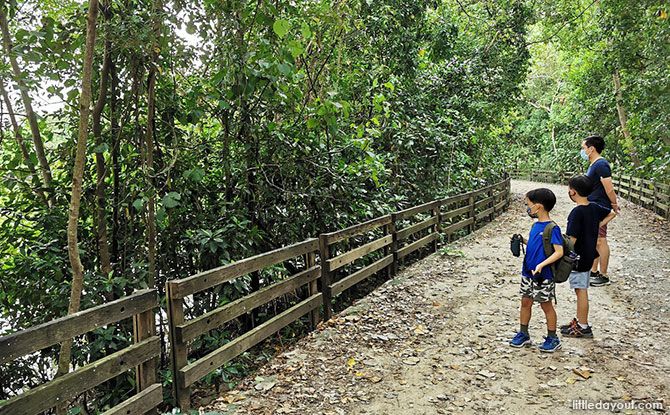
You are in for a treat if you visit Sungei Buloh to check out the wildlife. It is truly wild with a rich biodiversity. As you enter the wetland reserve while crossing the main bridge, look out for feeding herons, crocodiles and the schools of fish swimming about. It is little wonder that the area is teeming with wildlife just by the look of the numbers of fish like Halfbeak, Tilapia, Archer fish, Mullets swimming or jumping freely.
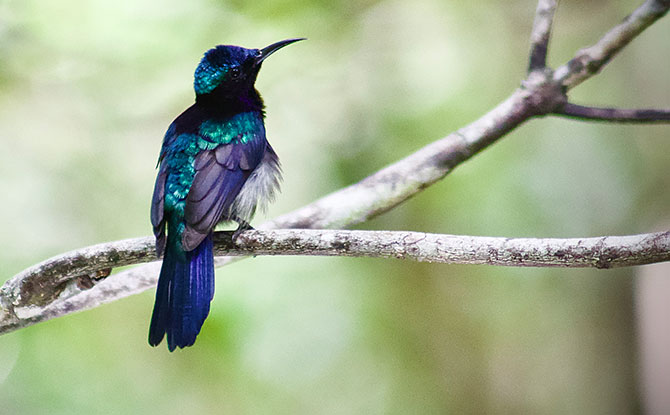
Depending on which route you take, whether it is the Mangrove Boardwalk, Tidal ponds or Coastal trail keep your eyes peeled on trees, branches, mud, water.
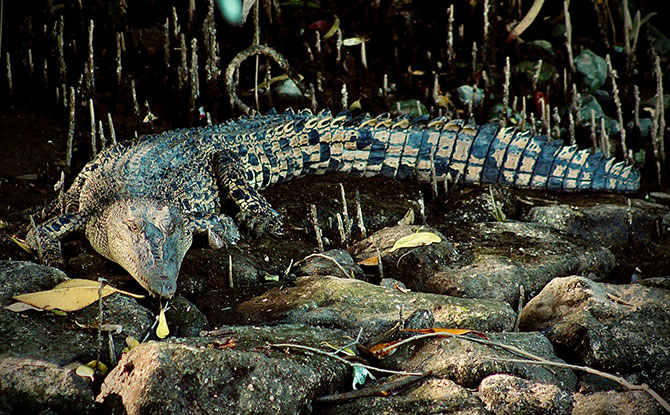
The residents at Sungei Buloh you can easily spot include Mudskippers, Monitor lizards, Collared Kingfishers, Glossy starlings, Herons, Storks, White Bellied Sea Eagles, Tree-climbing crabs and the infamous Estuarine Crocodiles.
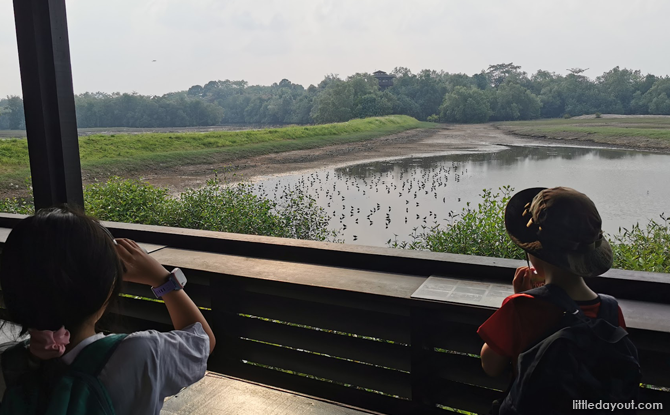
Sungei Buloh Wetland Reserves is a favourite stopover for shorebirds because of its mudflats and ideal conditions for a rest-stop. However, one protip is to go when the rest of the areas in Singapore experiences higher tides as the ponds in Sungei Buloh keeps the mudflats drier. Head to the ponds at the right time and you might get to see the shorebirds – Common Redshank, Common Greenshank, Whimbrel, Mongolian Plover, Common Sandpiper, Pacific Golden Plover. A favourite – the colourful Blue-winged Pitta has also been spotted here.
The best thing about this nature sanctuary is the number of hides and viewing huts where you can just sit quietly and watch the birds at the mudflats.
Sungei Buloh Wetland Reserve and its Tidal Ponds
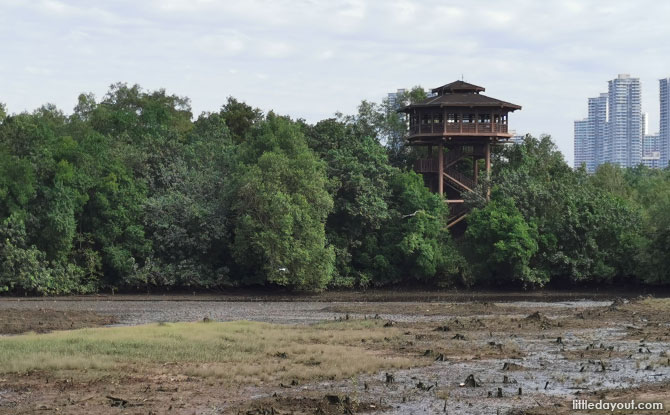
From the Wetland Centre, a bridge that connects to the wetlands or tidal ponds. The bridge spans the Buloh Besar river and visitors will need to head past decorated corrugated metal hoardings to arrive at the Tidal Ponds.
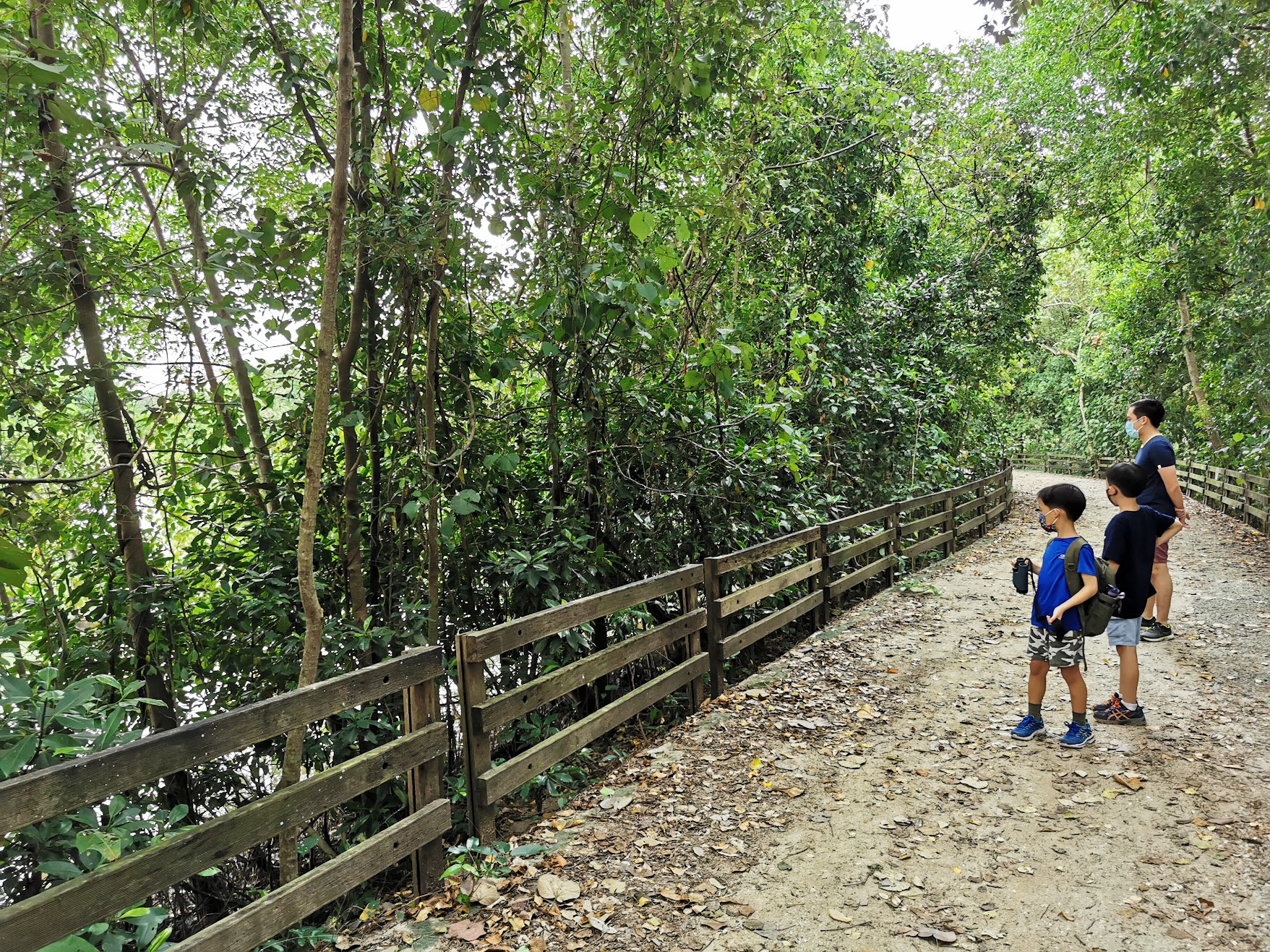
The Buloh Tidal Ponds have a raised, paved track that runs around its perimeter. This track, the Migratory Bird Trail is 1.95 km long. You can think of it as an oval, starting from the main bridge and with the ponds at the very middle.
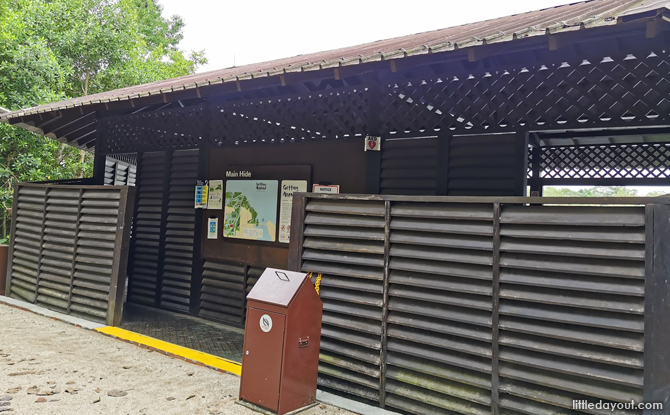
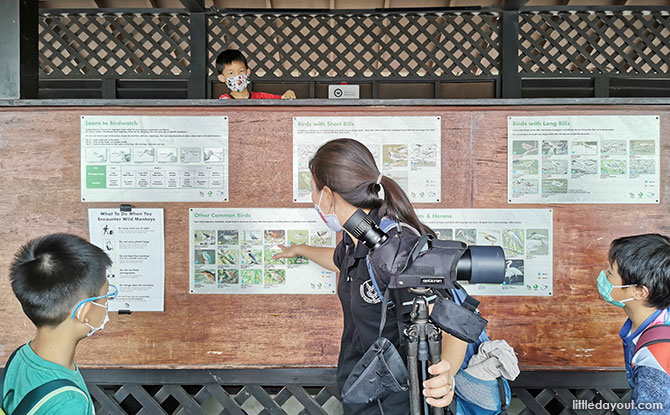
Along the trail, there are five hides. Each hide provides a place where you can sit down and observe wildlife at the Wetland Reserve. You will immediately see the Main Hide once you cross the Main Bridge. The hides also list pictures and characteristics of birds that one can find.
In addition to the five hides, there are also two shelters along the Migratory Bird Trail.
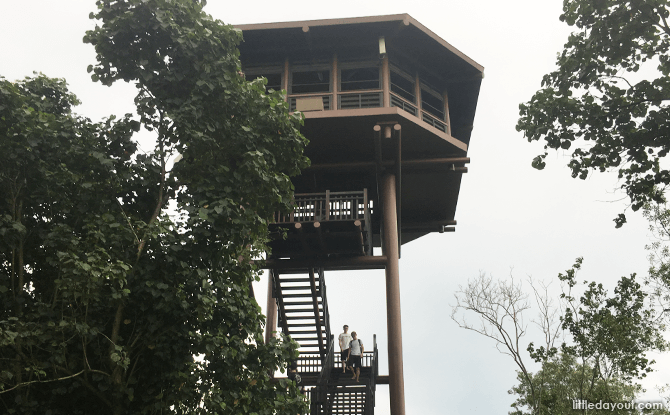
The only other major structure at the Sungei Buloh wetland is an 18-metre tall bird watching tower, the Aerie Tower. The tall structure has 72 steps leading to the top and can be found opposite the Main Hide. However, you will have to walk around the perimeter of the ponds to get to it.
Mangrove Boardwalk
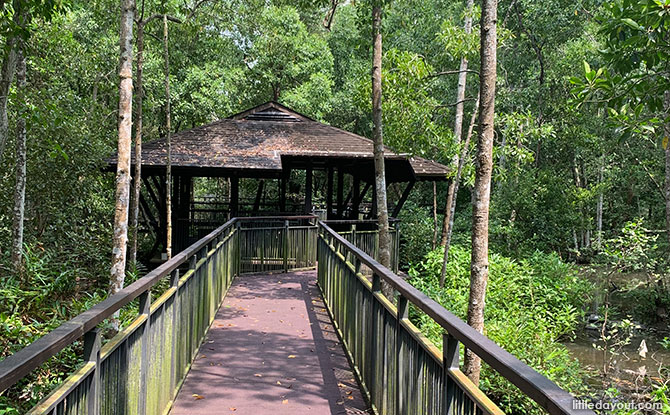
The less trodden path is probably the Mangrove Boardwalk which is adjacent to the main bridge. This is a tranquil place where few visit even though it is a pleasant place to rest, spot fish and mudskippers and hear the calls of the birds.
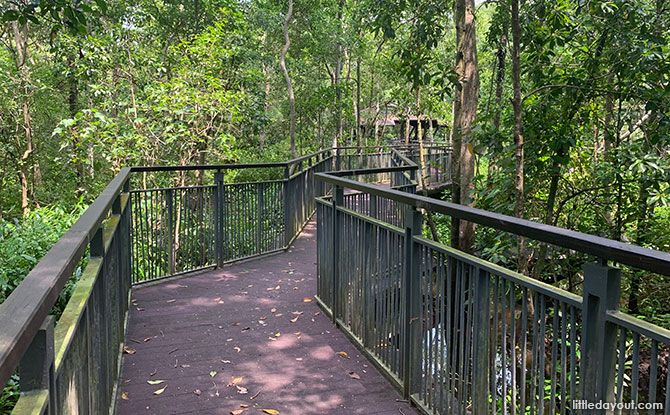
At first, the boardwalk, built on concrete pylons, will take you over marshy ground. To the left and to the right are slender trees and green shrubbery, fighting their way to get the sunlight.
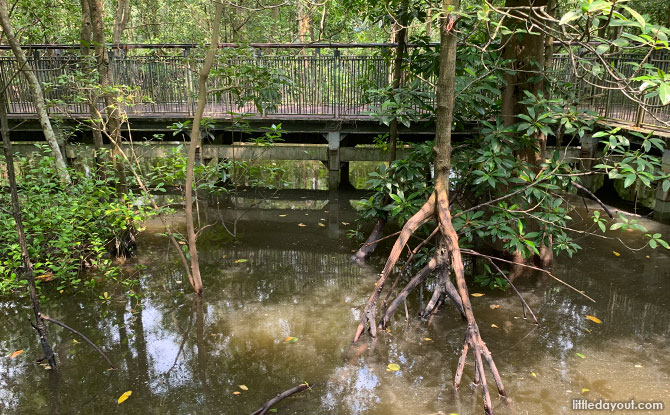
Venturing further in, the brown earth quickly gives way to muddy waters. As you walk past the waters, you can occasionally spot bubbles of air floating to the surface, or see busy mudskippers scampering up on to a resting spot on a mangrove tree’s roots.
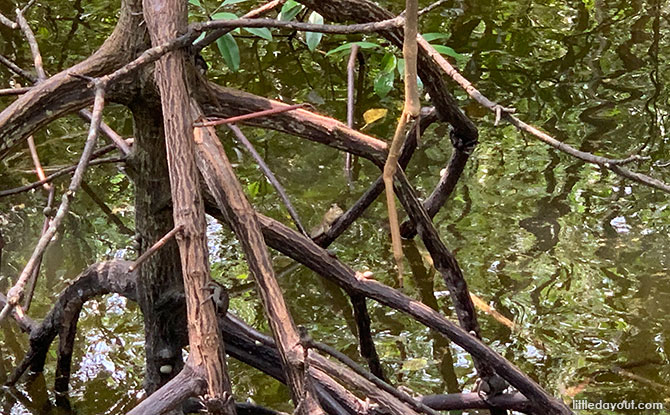
The mangrove trees are all around and you can get a close up look at their varied root systems perched up above the waterline.
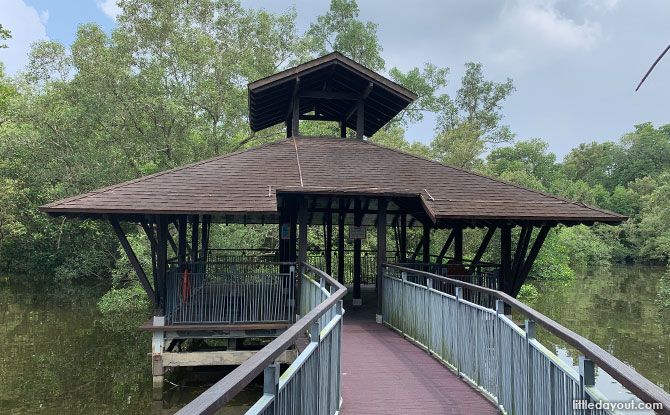
The Sungei Buloh Mangrove Boardwalk is also has several sheltered platforms.

When visiting them, be sure to look above to the ceiling. These have been richly decorated with colourful pictures which depict the wildlife found in Singapore.
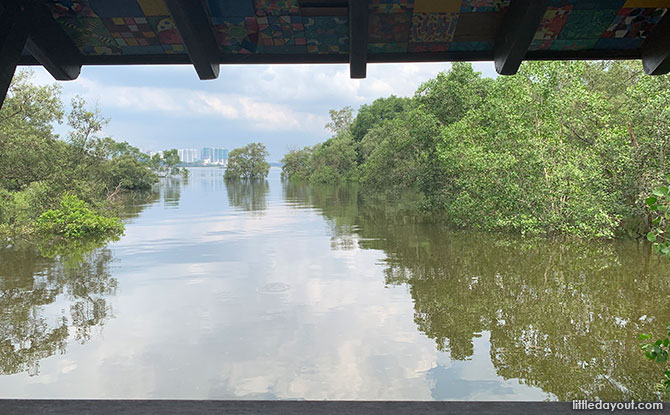
There is also the view from the platforms, some stretching out over the waters of the mangrove. When the water is still, it provides a mirror-like reflection, doubling the beauty of this special place.
Entrance via Sungei Buloh Wetland Reserve’s Visitor’s Centre
This East extension of Sungei Buloh was opened in 2014. It is a more family friendly extension with stroller-friendly paths and child-friendly elements. Upon arrival, visitors to the Sungei Buloh extension get welcomed by the Visitor’s Centre. The white complex houses the Mangrove Gallery.
Here, you will find exhibits and information introducing the unique environment of mangrove swamps.

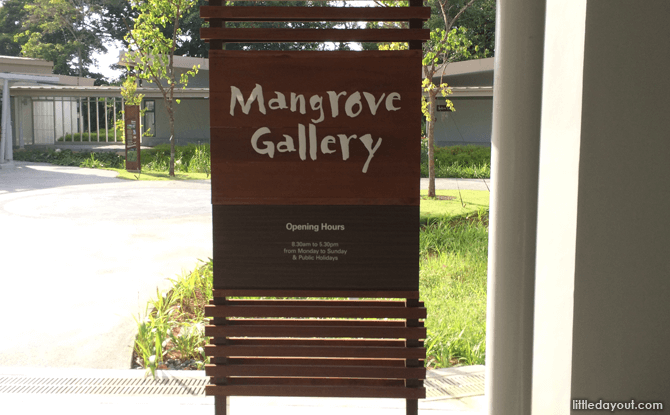
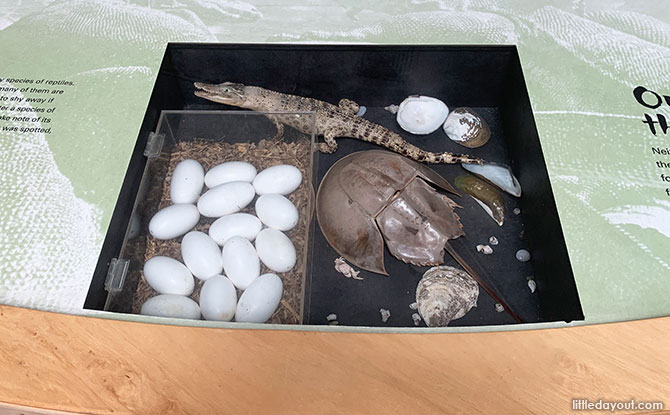
Look into the cases to learn about the biodiversity found in the mangrove environment.
Next to the Visitor’s Centre, the Junior Adventure Trail will entice the kids outdoors. This is a fun playground for all to try!
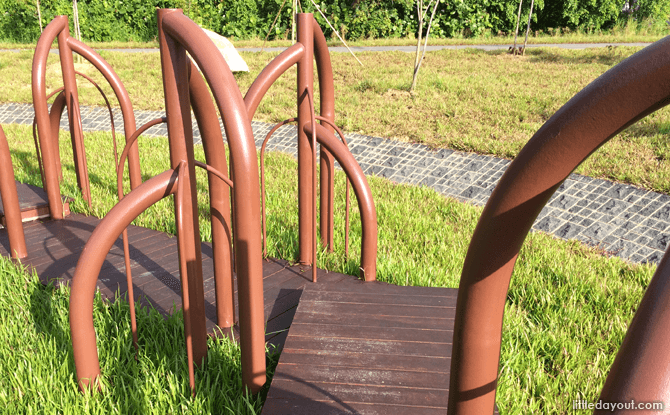
Take on Up and Down, a series of obstacles designed to look like mangrove roots that you can duck under and …
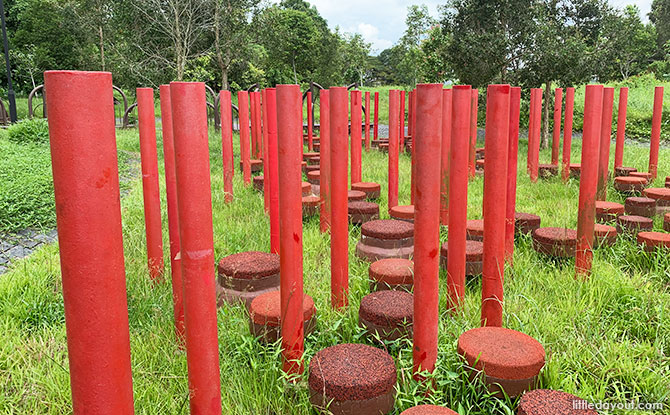
Step and Jump, a stepping stone challenge that is meant to be reminiscent of pencil roots. Kids can imagine what it is like to be a crab or mudskipper in the mangroves.
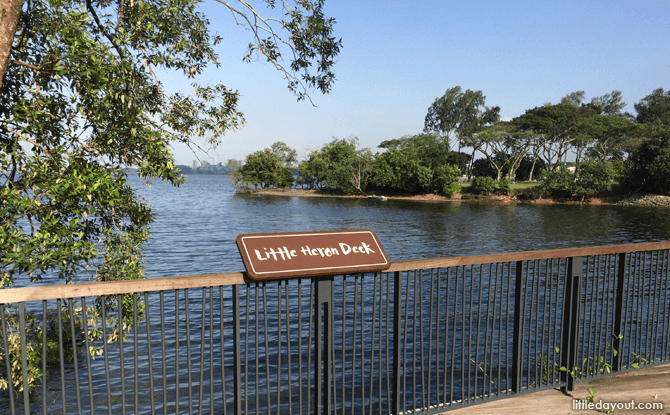
The Little Heron Deck is a pretty lookout point.
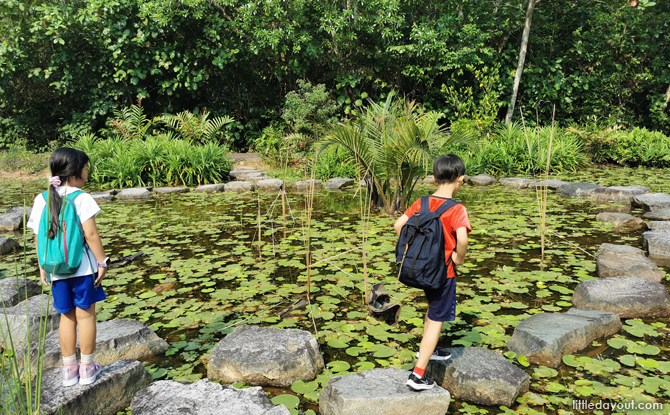
Before leaving the area around the Visitor Centre, do take a walk through the Junior Wetland trail. Be careful on the stepping stones! Children will have fun stepping on the rocks in pond while listening to the waterhen and looking for aquatic plants and animals.
There are two trails to explore at the Sungei Buloh extension.
The Coastal Trail is a 1.3 km long path that runs along the coastline. It is well paved and has a boardwalk that brings visitors over the water. The trail is even easily accessible with baby strollers.
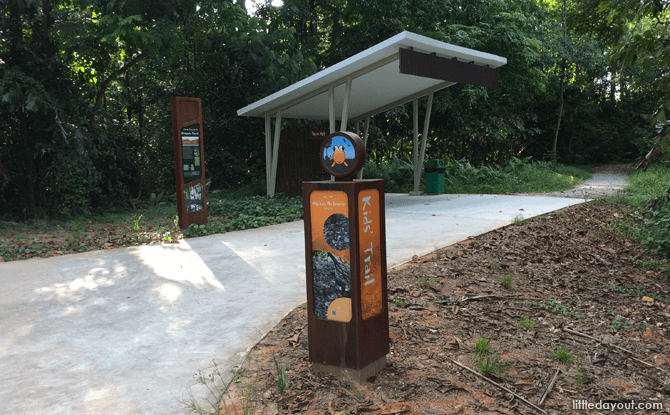
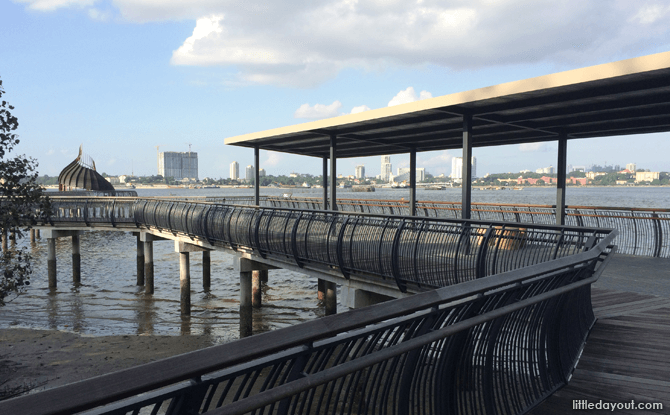 Dotted along the Coastal Trail are onion-shaped pods that serve as hideouts for bird-watching enthusiasts. Visitors can also look across the Straits of Johor and see the buildings of Johor, Malaysia quite clearly.
Dotted along the Coastal Trail are onion-shaped pods that serve as hideouts for bird-watching enthusiasts. Visitors can also look across the Straits of Johor and see the buildings of Johor, Malaysia quite clearly.
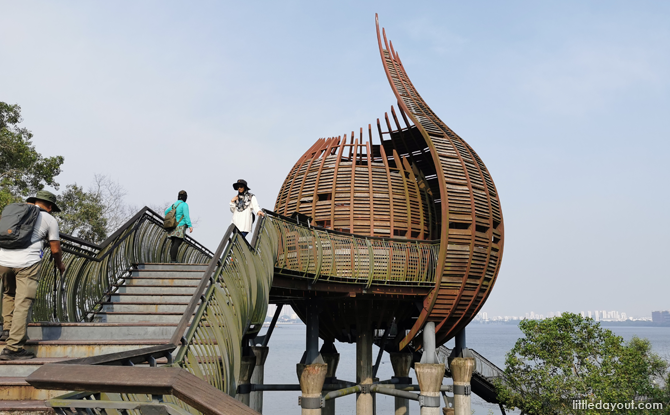
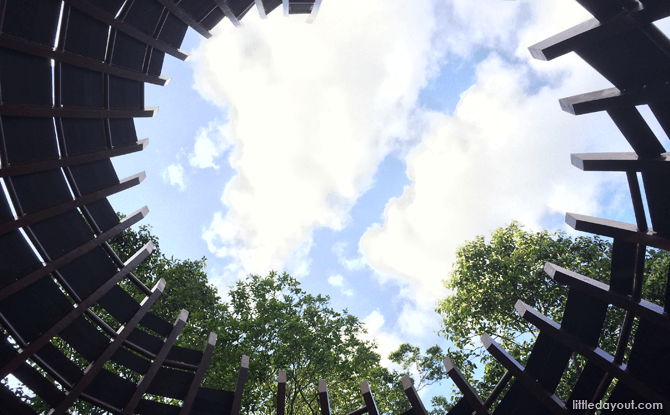
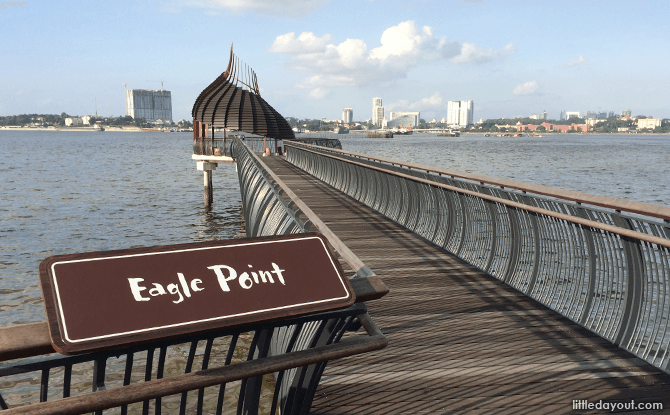
These pods are fun structures for children to climb into and explore.
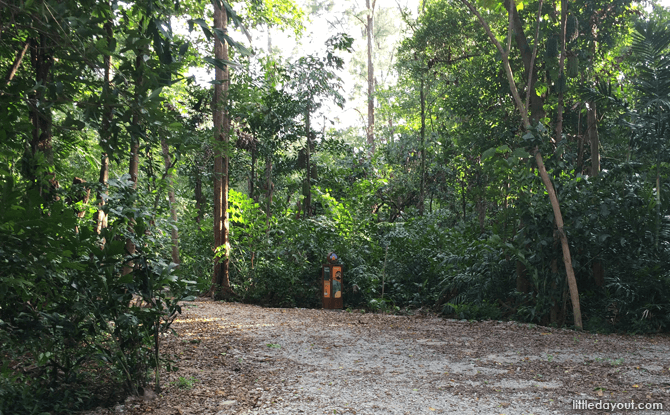
The 300-metre Forest Trail is a gravelly path that cuts through the forest.
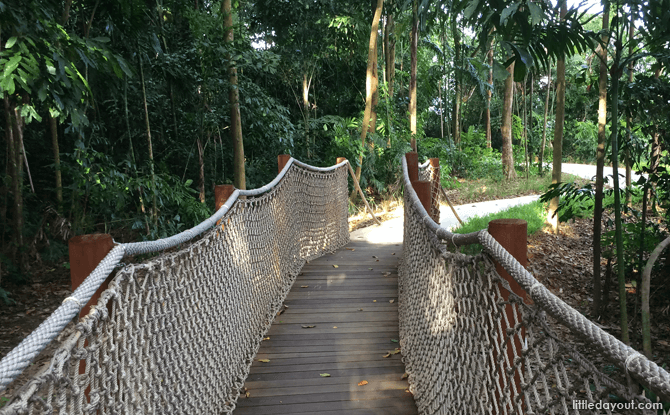
Linking the Forest and Coastal Trails is a 150-metre Mid-canopy Walk. Consisting of a springy, wooden bridge, you may find yourself wobbling along even after finishing the walk.
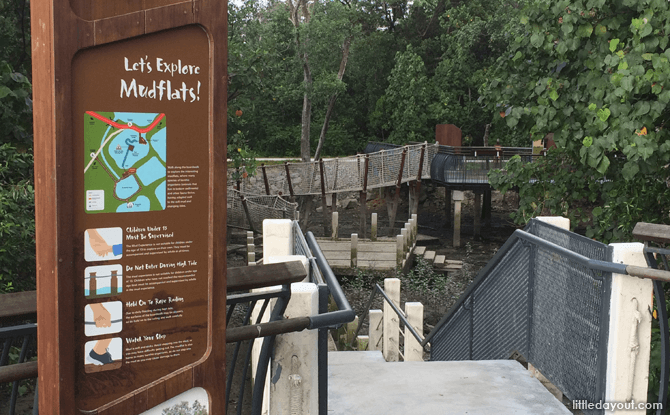
The Sungei Buloh extension is also home to the Mud Experience. This can be found at the other end of the trails, closer to the main Sungei Buloh Wetland Reserve entrance.
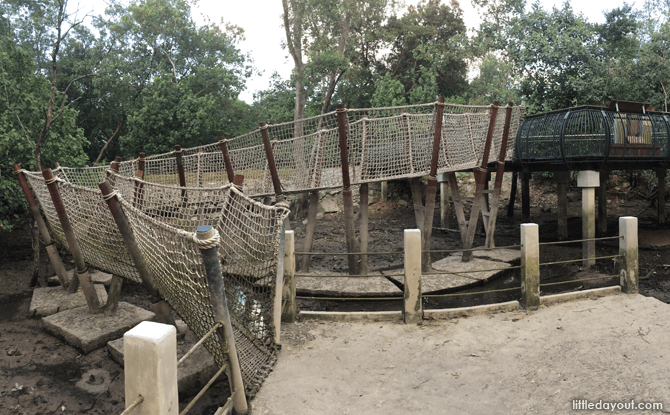
While most mangrove boardwalks around Singapore take visitors over the swamp, this one leads you down to its surface. Via a fun rope bridge too!
Go during low tide if you want to get up close to the mud because the Mud Experience’s platform gets covered with water during high tide and is off limits then.
The Sungei Buloh Wetland Reserve’s eastern extension makes the reserve much more accessible to the public.
While the original Sungei Buloh Wetland Reserve’s Migratory Birds Trail runs for almost 2 km over gravel paths, the extension’s trails are shorter and well-paved. This makes it easier for families to pay a visit and appreciate the wildlife at this sanctuary in the Northwest of Singapore.
Essentials for a Visit to Sungei Buloh Wetland Reserve
Now, that you are oriented to Sungei Buloh Wetland Reserve, here are five essentials that you need to bring along for your visit.
1. A Sense of Adventure
‘The world’s big and I want to have a good look at it before it gets dark.” – John Muir
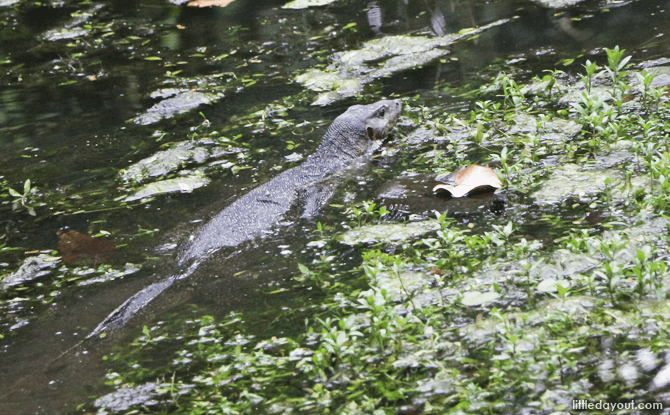
A healthy sense of adventure is essential. You never know exactly what you come across at Sungei Buloh and if you have an open mind, you will enjoy your visit even more. Every visit is different and you will be rewarded with a different experience each time.
2. Patience
“Adopt the pace of nature: her secret is patience.” – Ralph Waldo Emerson
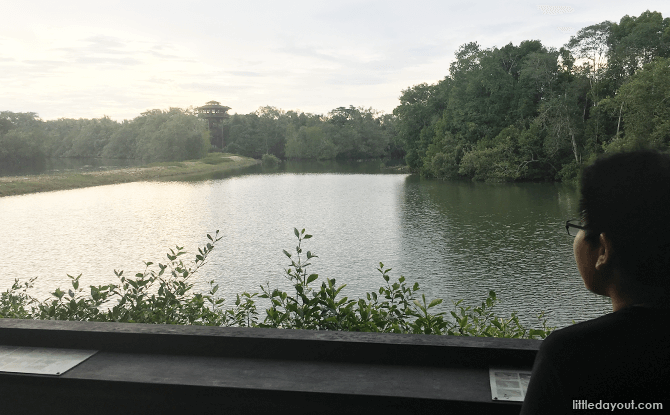
The animals at Sungei Buloh are wild and you can’t expect to them to appear on demand. If you wish to see the wildlife, you have to be patient. Sometimes, you will be able to see them and sometimes you won’t. If it is not the migratory season, you shouldn’t hope to see migratory birds – but there’s still plenty of wildlife to spot. Don’t power your way around the trail. A visit to Sungei Buloh is a chance to slow down and appreciate nature. Patience (with a bit of luck thrown in) pays off.
3. A Keen Eye
“Many eyes go through the meadow, but few see the flower in it.” – Ralph Waldo Emerson
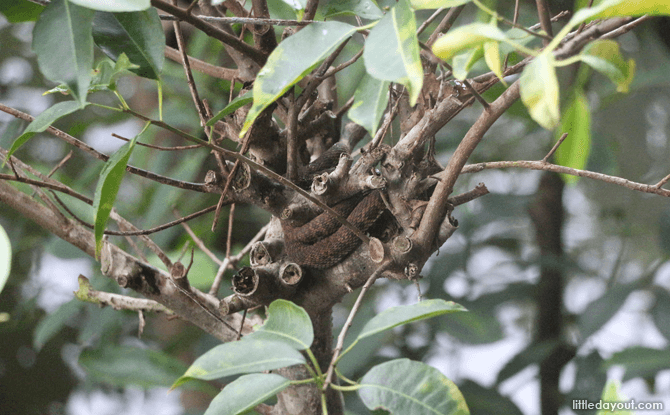
Flora and fauna come in all shapes and sizes. Sometimes, animals can be right under your nose and you may not notice them. Keep a lookout around you and above too. Pay attention to the rustling of leaves or the undergrowth. Try looking a bit closer and you may be surprised by what you come across.
4. Softer Tones
“When one tunes in into nature’s frequency, life becomes change, change becomes hope!” Aniekee Tochukwu Ezekiel
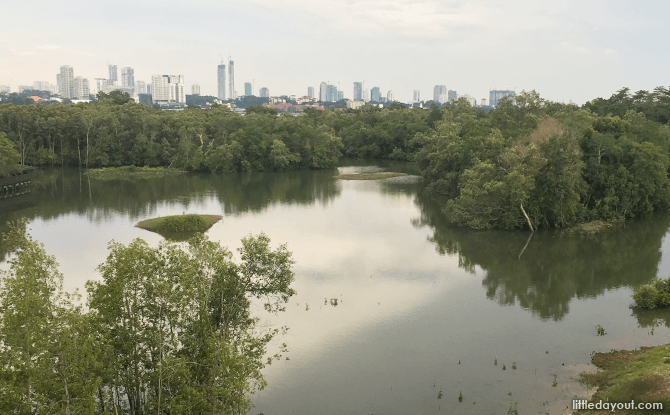
No, we are not talking about wearing the autumn collection to Sungei Buloh. We are talking about noise. Loud noise scares away animals. It alerts them that you are coming and they tend to run away. Trying walking and talking softer. Take a moment to remain quiet in the hides, wait for a while and see if anything comes out.
5. Respect for Nature
“Our task must be to free ourselves… by widening our circle of compassion to embrace all living creatures and the whole of nature and it’s beauty.” – Albert Einstein
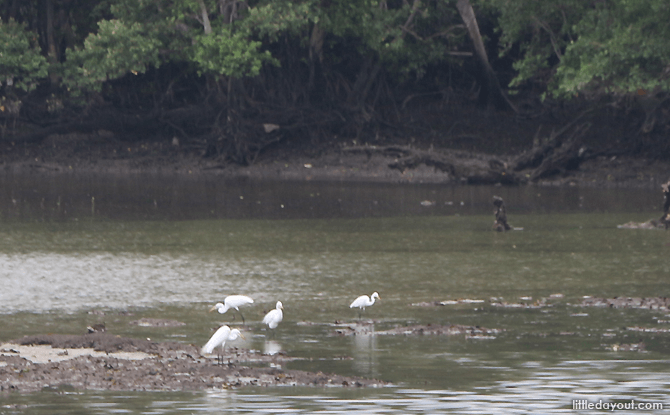
Remember to respect the wildlife you come across. Please don’t poke or provoke them. Of course, you shouldn’t destroy trees, break branches or bash carelessly through the undergrowth. It goes without saying that littering is a “no-no”. Practise the saying, “Take nothing but pictures and leave behind nothing but footsteps”.
There you have it, five essentials for your visit to Sungei Buloh Wetland Reserve. You can also find out more information about the Sungei Buloh Wetland Reserve Extension and Mudflats Experience.
Be Equipped!
We also recommend the following to bring alone for the walk:
- A hat
- A pair of binoculars
- Raingear
- Insect repellent
- Sunblock
- Water and snacks
Getting to Sungei Buloh Wetland Reserve
To get to Sungei Buloh Wetland Reserve by bus, board SMRT Bus 925 from Kranji MRT Station. Alight at Kranji Reservoir Carpark B (to Sungei Buloh Wetland Reserve Extension’s Visitor Centre).
On Sundays and Public Holidays, board SMRT Bus 925 from Kranji MRT Station and alight at the Wetland Centre entrance. SMRT Bus 925 operates only from Woodlands Interchange on Sundays and Public Holidays.
Alternatively, take the Kranji Express bus from the Kranji MRT Station, starting from 8.30 am and ending at 5.45 pm daily.
Sungei Buloh Wetland Reserve is served by three parking lots. Neo Tiew carpark is closest to the Wetland Centre and the Buloh Tidal Ponds. Kranji Carpark C and Kranji Carpark B are closest to the Visitor Centre which is about 1.5 km away from the Buloh Tidal Ponds.
View a map of Sungei Buloh Wetland Reserve here.
Sungei Buloh Wetland Reserve
Visitor Centre Address: 60 Kranji Way, #01-00, Singapore 739453
Wetland Centre: 301 Neo Tiew Crescent, Singapore 718925
Opening Hours: 7 am to 7 pm
Website







